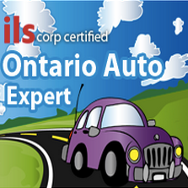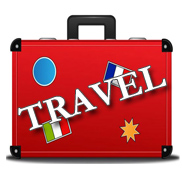
Nov 7, 2013 | News
November is Financial Literacy Month in Canada, and Canadians are keen to learn more about how insurance affects their finances, according to a recent Pollara survey commissioned by the Insurance Bureau of Canada (IBC). Half of Canadians want to better understand home and car insurance and how it fits into their financial plans and almost 90% think children should learn about home and car insurance at school, according to the survey.
Financial Literacy Month aims to empower Canadians with the knowledge, skills and confidence to make responsible financial decisions in their lives. BMO Financial Group recently released its third annual BMO Financial Literacy Report Card which gauges the personal finance knowledge and understanding of Canadians. The majority of Canadians (91 per cent) give themselves a passing grade for their level of financial literacy. That’s down slightly from 2012 (93 per cent), and up from 2011 (89 per cent). However, according to the report, many Canadians may have a false sense of confidence in their level of financial knowledge. As part of the report card, Canadians were quizzed on three questions related to common financial concepts. The report revealed:
- Nearly one-third (31 per cent) of those who give themselves an “A” were not able to answer more than half of the questions correctly.
- Moreover, while Canadians say they are most familiar with RRSPs, 66 per cent correctly answered that you only pay taxes on RRSP investments when they are withdrawn – down from 80 per cent in 2012.
- Younger Canadians have more trouble with these questions, with only 39 per cent of those under 35 passing the test.
“Understanding how insurance works and how it helps families manage risk is a very important part of financial literacy,” said Bill Adams, IBC Vice-President, Western & Pacific. “After disaster strikes is the worst time for people to learn what coverage their insurance provides. Financial Literacy Month in November is the perfect time for Canadians to increase their knowledge about insurance.”
The Insurance Bureau is urging Canadians to take the time during Financial Literacy Month to find out about their policies. Insurance agents: are you ready to answer these questions for your clients?
Home Insurance
- What does my policy cover and how much insurance do I need?
- Is there a specific kind of insurance for the type of home I live in (e.g., house, condo or apartment)?
- Are there risks I can’t buy insurance for?
- What optional coverage is available?
- Should I make a claim for every loss?
Car Insurance
- If I get into a collision tomorrow, what kind of coverage can I expect under my policy?
- What coverage is mandatory and what is optional?
- Should I purchase collision insurance on an older car?
- What kind of deductible is recommended?
- What factors affect my insurance (e.g. distance driven)?
Business Insurance
- What kind of insurance do I need?
- Are there risks I can’t buy insurance for?
- If my business is home-based, do I need special coverages?
- What does errors and omissions or malpractice insurance cover?
- How is my premium calculated?
Make sure your knowledge is up to date with online continuing education, insurance training and insurance licensing courses from ILScorp.com

Nov 6, 2013 | News
Young Ontario drivers may soon benefit from a new program aimed at cutting vehicle insurance costs for this high risk group.
Ontario parents and their teen drivers could have some relief for the high cost of car insurance, when a variation of a Quebec program by insurer Industrial Alliance comes to Ontario. While it won’t be run by Industrial Alliance, it will be loosely based on its Mobiliz program aimed at 16-to-24-year-old drivers.
The program involves installing a small wireless device in a car’s diagnostic port, designed to measure driving behaviours such as speed, time of travel and distance, hard braking, pace of acceleration and turn speed.
In the past 18 months, the program in Quebec has reduced accident claims by this high risk group by about 40 per cent, allowing Industrial Alliance to reduce the cost these drivers pay for its insurance by an average 23 per cent.
A 20-year-old male insuring his first car typically pays around $3,000 a year in the Greater Toronto Area, so reducing that by $690 is a significant savings.
An application is before the Financial Services Commission of Ontario (FSCO), to launch such a plan. Paul-André Savoie, whose Montreal firm Baseline Telematics is working with a large insurer to launch the program, told the Toronto Star that he hopes to have approval and a product available within three to six months.
“The savings for young drivers will be substantial,” Savoie told the newspaper. “It’s going to be a game changer.”
Savoie’s company developed software that allowed Industrial Alliance to introduce Mobiliz. These telematic products measure how you drive — and the results are available to you and your insurer online.
Suzanne Michaud, a vice president of client services with Industrial Alliance, says the Mobiliz program has exceeded expectations.
“Are we happy? Yes, very much,” she said. The company is a small player in the national auto insurance market and has no plans to bring Mobiliz to Ontario.
Quebec-based Desjardins Insurance introduced a usage-based plan in Ontario last spring. Spokesman Joe Daly says one-third of eligible new customers are trying its Ajusto program and it has 40,000 people in Ontario and Quebec using it.
Daly says the average savings is 12 per cent, though the company says you can earn up to 25 per cent by exceeding all its benchmarks. Unfortunately for many GTA commuters, the scheme penalizes those who drive more than 15,000 kilometres a year. These drivers cannot earn more than a 15 per cent reduction, no matter how well they drive.
Savoie has six projects underway with Ontario insurers, including the one he hopes to see available by the spring. He says insurers are eager to explore the potential of telematics. For example, it can help them target niche markets, whether it is the worst drivers, low mileage drivers or urban vs. rural drivers.
Applying for a Mobiliz policy is easy and quick. The online form asks for your age, gender, postal code and make of car and instantly returns a quote with the monthly payment. Mobiliz price adjustments are made monthly, rather than annually upon renewal. The instant reward is a powerful incentive for young drivers on tight budgets, Savoie says. It pairs good driving with immediate saving.
The use of telematics and usage-based insurance policies is only in its infancy. A recent article on industry website Property Casualty 360 notes that the global market share of usage-based insurance has doubled in the past year. One area where insurers see potential is wearable technology devices that can monitor your heart rate and blood pressure among others.
“Health Insurance companies are starting to take a long look at this type of technology,” says Carole Beatty with SAP Canada.
Excerpted from an article by Adam Mayers in the Toronto Star
Make sure you are up to date with the latest developments in Ontario Vehicle Insurance. Take the ILScorp Ontario Auto Expert Course.

Nov 5, 2013 | News
Your commute home will be extra risky over the next two weeks, as drivers adjust to the end of daylight savings time and changes in their sleeping patterns and driving conditions.
The Insurance Corporation of BC historically sees a 16 per cent increase in the average number of crashes in B.C. during the late afternoon commute in the two weeks following the end of Daylight Savings Time, compared to the two weeks prior to the change.
The biggest impacts can be felt on some of the key skills that affect the quality of our driving – concentration, alertness behind the wheel and reaction time to potential hazards.
“Safety is our top priority, which is why we’re asking drivers to recognize that the effect of the time change combined with increasingly challenging road conditions can increase your chances of being in a crash,” said Todd Stone, the BC Minister of Transportation and Infrastructure. “Make sure you’re well rested, give yourself plenty of time and focus your full attention on the road.”
“Drowsy driving is actually one of the leading causes [of accidents] in North America. It’s very much akin to regular impairment,” said Liz Peters of CAA Manitoba. “It’s like drinking and driving. You’re not focusing on the road in front of you.”
While the fall time change means we can get an extra hour of sleep, according to an ICBC survey, 30 per cent of drivers overcompensate for that extra hour by staying up later and therefore losing any potential benefit of the extra rest.
“We rationalize that extra hour of sleep – many of us think that we can stay awake longer, but we actually end up feeling more tired and less alert,” said Dr. John Vavrik, a psychologist with ICBC. “The time change is an opportunity to get some extra rest and it’s also a good time to think about how we can adjust our driving to the fall and winter road conditions.”
Another study from two researchers at Carnegie Mellon University in Pittsburgh in 2007, found that daylight time has a significant impact on the number of pedestrians killed by vehicles in the immediate aftermath of the time switch in the fall.
People walking during rush hour in the first few weeks after the clocks fall back in the autumn were more than three times as likely to be fatally struck by cars than before the change. There was no significant difference at noon, but there was around 6 p.m.
Here are some tips from ICBC to help you adjust to the time change:
- In darker, poor conditions, visibility is significantly reduced making it difficult to see pedestrians and cyclists on our roads. That’s why it’s important to give yourself extra time so you aren’t rushing and adjust your speed to the conditions you encounter. Always be on the lookout for pedestrians and cyclists – especially at intersections and near transit stops where pedestrians will be coming and going and may not use crosswalks.
- Prepare your vehicle for the change in weather. Clean your vehicle’s headlights and check that they’re all working properly, especially your rear lights. Make sure you have enough windshield wiper fluid and that your wipers are in good condition.
- Keep your regular sleep/wake cycle. Go to bed at the same time you normally would so you can benefit from that extra hour of sleep. Don’t assume you are more rested and alert on the road the mornings following the change as the time change can impact the quality of your sleep and affect your body’s internal clock.
ILScorp now offers two new ICBC Autoplan courses for BC insurance agents.

Nov 4, 2013 | News
Congratulations to the students who are starting a four week challenge today, participating in the ILScorp virtual classrooms. In just four weeks, students are enrolled in the ILS Introduction to General Insurance will complete their level 1 licensing programs. Students will also be ready to write their CAIB exams after taking the CAIB prep classes. ILScorp also offers the Fundamentals of Insurance exam prep as part of the virtual classroom program.
Along with ILScorp’s regular insurance training programs, the virtual classroom provides daily emails and quizzes, and a schedule the keeps students on track to complete the program in just four short weeks.
While this series of virtual classrooms is now under way, the training and licensing programs that it includes can be started anytime. Train at home, online, at your own convenience. The ILS IGI for example, has a more than 80% pass rate for first time licensees. The ILS IGI – Canada’s newest and most up-t0-date insurance licensing course – is accredited for agents working in BC, Manitoba and Saskatchewan. The IGI was written by Steve Hawrishok, original author of the Fundamentals of Insurance program and the Canadian Accredited Insurance Brokers program.
The next virtual classroom begins January 6. Start your new year off with a new career in insurance.
To find out more about our insurance training programs visit ILScorp.com or call us today at 1-800-404-2211.

Nov 1, 2013 | News
Canada’s snowbirds are starting to head south for the winter, but many of them don’t have the proper insurance coverage for their time away. According to a recent survey by TD Insurance, only half of Canadians aged 50 and over checked their travel insurance policy before leaving for vacation, and only 16% called their insurance provider to determine if they needed to update their policy.
“Snowbirds have a unique set of insurance needs, different from most Canadian travellers,” says Dave Minor a vice president at TD Insurance. “Not only do they need to understand exactly what their travel insurance policy covers, but they may have to review auto, recreational vehicle, and home insurance policies – for both their property down south and back home – before they travel.”
Canadian snowbirds heading south for the winter need to consider:
Travel insurance
“Snowbirds should review the details of their travel medical insurance policy including whether or not there is a time limit for out of country coverage and what they need to know about pre-existing conditions and limitations,” Minor said. “If a snowbird has visited a hospital or switched medications in the past 12 months, this information needs to be disclosed to their insurance provider, as a failure to do so may impact insurance coverage should they need to make a claim.”
If you are unsure about your policy coverage, check with your insurance broker.
Auto insurance
According to the survey, 46% of Canadian snowbirds believe that if they are driving outside of Canada, their auto insurance policy will cover them, but this isn’t always the case.
“Snowbirds need to call their insurance provider if they are taking their vehicle outside of Canada or the United States, or if they plan to rent a vehicle for more than 30 days,” says Minor. “They should also consider increasing their liability limit given that claims in the United States can be expensive, and discuss that with either their provider or insurance agent.”
For snowbirds travelling down south by motorhome or RV, keep in mind that although insurance protection on recreational vehicles is similar to regular auto insurance, because this vehicle also serves as a home, it requires a unique policy.
“If RV owners are increasing the amount of time they are living in their vehicle – for example living in the unit full time versus an occasional weekend getaway – then their policy may need to be revised,” says Minor. “Check with your insurance provider to find out what your needs are, so you’re not left uncovered.”
Insurance providers: become an Ontario Auto Expert with ILScorp.
Home insurance
Only 12% of Canadian snowbirds say they checked their home insurance policy to ensure their primary residence would be covered while on vacation. Making sure you take the necessary steps to protect your home before you travel will make the process easier should you need to make a claim.
“Often insurance policies have specific ‘away’ requirements, which, if not fulfilled, could void coverage if your home is left unoccupied and unattended for an extended period of time,” says Minor. “Contact your insurance provider to make sure you know what steps to take to keep your current policy valid.”
ILScorp offers homeowners policy courses for insurance agents, to ensure you can provide proper coverage for your clients.
TD Insurance commissioned Environics Research Group to conduct an online custom survey of 2,748 Canadians aged 18 and older, including 1,362 Canadians 50 years of age or older (referred to as snowbirds). Responses were collected from February 7 to 18, 2013. More information and tips about your insurance needs are available at www.tdinsurance.com.
Do you review insurance needs with your snowbird clients before they head south?

Oct 31, 2013 | News
With trick-or-treaters knocking on doors on tonight and Halloween parties this weekend, drivers are being asked to be extra cautious on the roads and parents are reminded to make a plan to help their children stay safe this Halloween.
“As a parent myself, I know how excited children are about trick-or-treating and their safety on the road may not be top of mind for them,” said Todd Stone, BC’s Minister of Transportation and Infrastructure. “That’s why the onus is on us as parents, and as drivers, to make sure children have a fun and safe Halloween.”
“Kids love to have fun on Halloween, and that can mean popping out from behind bushes to scare their friends or wearing the dark costumes of their favourite characters,” said Suzanne Anton, BC’s Attorney General and Minister of Justice. “While this is what makes the night memorable, it’s also what can make them disappear from sight for drivers on the road. Parents can add reflective stickers to their child’s candy bag and drivers should be sure to go very slow, especially through residential neighbourhoods.”
Here are ICBC’s tips for parents and drivers to stay safe:
Tips for parents:
- Dress to be seen: Halloween is about putting on spooky outfits – but that often involves dark colours. A good solution is to buy reflective tape that you can add to the outfit or even to children’s shoes or bags to help them stand out against the dark road.
- The best ghouls see everything: Masks are a key part of many Halloween costumes but it’s important that it doesn’t hinder your child’s ability to see what’s going on around them. Put the mask over your own face to check the visibility and make any necessary adjustments.
- The best ghouls hear everything too: Hearing is just as important as seeing when it comes to safety around roads. Remind your children not to use their cellphone or listen to their iPod.
- Safety in numbers: Walk in numbers to help drivers and others see you and your children. Be sure to have an appropriate number of adults to accompany the children.
- Gone haunting: If your kids are heading out for some trick-or-treating fun without you, help them plan a safe route ahead of time. Consider a route that takes them through a quiet residential area away from busy main roads and parking lots. Remind them to cross streets at designated crossing points.
Tips for drivers:
- A fright’s just around the corner: Drivers need to slow down and expect the unexpected. Children are likely caught up in the excitement of Halloween and may forget the rules of the road, so slow down and be especially alert in residential areas. Limit any distractions in your car so you can focus your full attention on the road.
- The ghouls may not notice you: Children may have very limited visibility while wearing masks and costumes so don’t assume they see you approaching. Always yield to pedestrians – by doing so, you help ensure they cross the road safely.
- Beware of those dark alleys: Surprises often lurk in the darkest of places so enter and exit driveways and alleys slowly and carefully. Watch for little trick-or-treaters when backing up.
- Don’t end on a true scare: If you’re hosting or attending a Halloween party, always make sure there are options for everyone to get home safely, such as designated drivers, transit or taxi numbers on hand.
For more road safety tips, visit icbc.com/road-safety.
Learn more about ILScorp’s ICBC Autoplan Courses for insurance agents.








